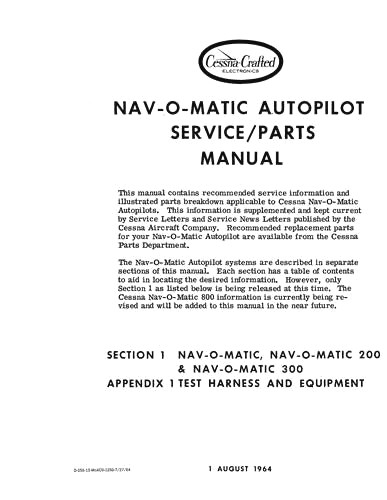Cessna 400 Autopilot Manual

Feb 17, 2010 - Has aircraft previously had an ARC 400A or 400B autopilot installed? If a Cessna Manual Electric Trim system is currently installed, the.
By Bob Hart – Contemplating an autopilot upgrade? SLOW YOUR ROLL! Reviving a “tired” original may be the smarter, more economical option. If you’ve been following my articles, you know that I believe an autopilot—even a basic wing leveler—belongs in any aircraft that intends to spend time in the clouds in IFR flight. The less time a pilot has spent in IFR conditions (e.g.
A low time pilot with a fresh IFR ticket), the more an autopilot is needed. Cessna first introduced an optional autopilot in the 1962 172C model, and their choice of manufacturer for factory-installed autopilots and avionics was Cessna’s own division known as ARC.
Aircraft Radio Corporation (ARC) got its start in 1924 and played a significant role in the development of early avionics. You may be aware of the famous flight by Jimmy Doolittle in a Consolidated NY-2 aircraft in which “blind-flight” was first demonstrated. That was possible through the efforts of ARC, Sperry, and others. ARC also went on to develop avionics used in military aircraft in WWII.
Then, after the war, Cessna Aircraft Corporation purchased ARC and changed its name to Aircraft Radio and Control (thus keeping the ARC “handle”) and a whole new division of Cessna was created for the sole purpose of developing, manufacturing, and supplying avionics and autopilots to be installed exclusively in Cessna aircraft. Obviously, autopilot technology in general aviation aircraft (including ARC autopilots) has evolved since then.
In this segment, we’ll identify Cessna “Legacy” autopilots and review their respective strengths and weaknesses, but let’s start with some autopilot basics. First, autopilots are available with single-axis (roll) or two -axis (roll and pitch). NOTE: Some autopilots offer a third axis or yaw damper (or separate yaw damper) option which is designed to compensate for excessive adverse yaw caused by aircraft design (as in the case of the V-tail Bonanza) or excessive turbulence.
Cessna 182 Autopilot
These are most often found in twins and charter aircraft to dampen yaw and make the flight more comfortable for passengers. Autopilots are also available as either rate-based (where the turn coordinator is the primary sensing device) or attitude/position-based (where the artificial horizon serves as the sensor for roll and pitch). There are pros and cons to both types.